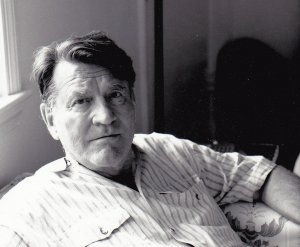Jay Haley and Strategic Therapy

The strategic therapy of Jay Haley is characterized by the therapist having a lot more initiative than in other types of therapies. They also have to identify a series of key points. Their responsibilities here involve things such as identifying what problems can be solved to designing therapies. They also have to set goals, offer feedback, and evaluate the patient.
Jay Haley wanted to go beyond just what a therapist could dictate during the session. He didn’t want to focus on symptoms or mental or mood states. Thus, what he really wanted to do was work with social situations, not focus the work on the individual.
Jay Haley’s postulates for strategic therapy
Jay Haley wanted to offer a perspective where the clients’ problems don’t just lie within themselves. That’s because humans are social beings. As such, all of your environment is involved whenever you experience problems.

That’s why he believed the patient isn’t the appropriate unit of intervention. Their immediate family, extended family, and/or people they’re in relationships with are also relevant. This perspective of the situation also includes professionals who come into contact with the problem in one way or another.
Haley analyzed the structures that families established within themselves. He was also interested in the rules, statuses, or power roles within them. Certain roles and rules are more important than others. He believed that analyzing them would help him understand his patient’s life better.
Sometimes, the reason for the complaint, inappropriate behavior, or consultation was confusion or a lack of balance in the hierarchy. This shifted the adaptation to the cycle of family life. If, for example, the daughter in a family was the one in charge of trying to mediate conflicts between her parents, that would be a great imbalance. That’s because this isn’t an appropriate role for a daughter to play in a family.
Anthropologist Gregory Bateson was the first great systems theorist. He took human relationships as his object of study. In performing this work, he applied some theoretical paradigms. Some examples of those he used were general systems theory (GST) and cybernetics.
The Mental Research Institute (MRI)
With Bateson’s work, they created the Mental Research Institute (MRI) in Palo Alto, California. Many thinkers ascribing to the systems approach also worked at this institute. Some examples are John Weakland, Don D. Jackson, Virginia Satir, Jay Haley, and Paul Watzlawick.
The initial work of authors such as John Weakland and Jay Haley had a strong influence on Erickson. Erickson was a psychiatrist from the United States who was very successful in the middle of the 20th century. They first called family therapy “strategic therapy”. They modeled this after the type of therapy that Haley developed. However, due to the fact that Haley’s postulates and those of the MRI are very similar, experts tend to present them both together.
Jay Haley’s vision regarding people
Systems theorists such as Jay Haley understood the behavior of people as a product of their interactional context. This, he argued, was the most relevant point. That’s because it had more power to explain psychological aspects than any personality variables. The general systems theory and human communication theory are foundational models that allow you to understand and analyze human groups. They also explain how interaction is, above all, communicational.

On the one hand, a series of elements and rules that determine relationships among each other make up a system. On the other hand, you can observe these relationships in a circular manner. This is the phenomenon of the interactional pattern where A produces B and B maintains A.
How MRI and Jay Haley’s strategic therapy complement each other
What makes the systems models so different from others made through other frameworks is their perspective on maladaptive behaviors. They surmise that they’re products of interactions. They’re not just variables related to an individual’s personality.
In the MRI, they believed that problems arise because people take on maladaptive interactional sequences as habits. Then, they proceed to repeat them in similar situations. Strategic therapy observes that problems appear when there’s a particular distribution of power within the family system.
Another difference between strategic therapy and MRI is that MRI argues that failed attempts at solutions maintain problems. As such, problems are a part of the result of failed problem resolution attempts.
Function of systems
Nevertheless, Jay Haley believes, from his systems point of view, that symptoms have a function, even though it might not be adaptive. That’s why you can understand the symptoms as a dysfunctional way to communicate something.
Specifically, you have to consider the fact that you live in a social context. As such, you influence it as it influences you. Using a psychological therapy that excludes the social environment is like trying to study an animal outside of their environment.
The strategic therapy of Jay Haley is characterized by the therapist having a lot more initiative than in other types of therapies. They also have to identify a series of key points. Their responsibilities here involve things such as identifying what problems can be solved to designing therapies. They also have to set goals, offer feedback, and evaluate the patient.
Jay Haley wanted to go beyond just what a therapist could dictate during the session. He didn’t want to focus on symptoms or mental or mood states. Thus, what he really wanted to do was work with social situations, not focus the work on the individual.
Jay Haley’s postulates for strategic therapy
Jay Haley wanted to offer a perspective where the clients’ problems don’t just lie within themselves. That’s because humans are social beings. As such, all of your environment is involved whenever you experience problems.

That’s why he believed the patient isn’t the appropriate unit of intervention. Their immediate family, extended family, and/or people they’re in relationships with are also relevant. This perspective of the situation also includes professionals who come into contact with the problem in one way or another.
Haley analyzed the structures that families established within themselves. He was also interested in the rules, statuses, or power roles within them. Certain roles and rules are more important than others. He believed that analyzing them would help him understand his patient’s life better.
Sometimes, the reason for the complaint, inappropriate behavior, or consultation was confusion or a lack of balance in the hierarchy. This shifted the adaptation to the cycle of family life. If, for example, the daughter in a family was the one in charge of trying to mediate conflicts between her parents, that would be a great imbalance. That’s because this isn’t an appropriate role for a daughter to play in a family.
Anthropologist Gregory Bateson was the first great systems theorist. He took human relationships as his object of study. In performing this work, he applied some theoretical paradigms. Some examples of those he used were general systems theory (GST) and cybernetics.
The Mental Research Institute (MRI)
With Bateson’s work, they created the Mental Research Institute (MRI) in Palo Alto, California. Many thinkers ascribing to the systems approach also worked at this institute. Some examples are John Weakland, Don D. Jackson, Virginia Satir, Jay Haley, and Paul Watzlawick.
The initial work of authors such as John Weakland and Jay Haley had a strong influence on Erickson. Erickson was a psychiatrist from the United States who was very successful in the middle of the 20th century. They first called family therapy “strategic therapy”. They modeled this after the type of therapy that Haley developed. However, due to the fact that Haley’s postulates and those of the MRI are very similar, experts tend to present them both together.
Jay Haley’s vision regarding people
Systems theorists such as Jay Haley understood the behavior of people as a product of their interactional context. This, he argued, was the most relevant point. That’s because it had more power to explain psychological aspects than any personality variables. The general systems theory and human communication theory are foundational models that allow you to understand and analyze human groups. They also explain how interaction is, above all, communicational.

On the one hand, a series of elements and rules that determine relationships among each other make up a system. On the other hand, you can observe these relationships in a circular manner. This is the phenomenon of the interactional pattern where A produces B and B maintains A.
How MRI and Jay Haley’s strategic therapy complement each other
What makes the systems models so different from others made through other frameworks is their perspective on maladaptive behaviors. They surmise that they’re products of interactions. They’re not just variables related to an individual’s personality.
In the MRI, they believed that problems arise because people take on maladaptive interactional sequences as habits. Then, they proceed to repeat them in similar situations. Strategic therapy observes that problems appear when there’s a particular distribution of power within the family system.
Another difference between strategic therapy and MRI is that MRI argues that failed attempts at solutions maintain problems. As such, problems are a part of the result of failed problem resolution attempts.
Function of systems
Nevertheless, Jay Haley believes, from his systems point of view, that symptoms have a function, even though it might not be adaptive. That’s why you can understand the symptoms as a dysfunctional way to communicate something.
Specifically, you have to consider the fact that you live in a social context. As such, you influence it as it influences you. Using a psychological therapy that excludes the social environment is like trying to study an animal outside of their environment.
This text is provided for informational purposes only and does not replace consultation with a professional. If in doubt, consult your specialist.







